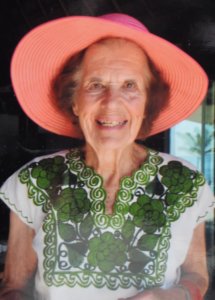Mr. Saity (written 30 years later)

Some years ago John and I often flew to New York City for the day on Jet Blue’s $19 round trips. We started at the Metropolitan Museum and worked our way down to Grand Central Station, stopping at places of interest.
Jewelry had always fascinated me, and I had read about Mr. Saity’s shop on Park Avenue, which had outstanding Tibetan and American Indian jewelry. Why not check it out?
A shiny glass window displayed Zuni pottery bowls with distinctive terra cotta black, white and brown designs, carved wooden ceremonial pieces, a Navajo turquoise and shell necklace and a Gallina effigy form of a clay bird. We pressed the button and stepped inside. Mr. Saity rose from his desk to greet us with a mid-eastern accent overlaid with British diction. He looked us over carefully as if to assess us. I was dazzled by the number of exceptional pieces.
The Park Avenue store was small but beautiful: the walls covered with posters of glittering movie stars wearing his pieces and enticing cases filled with unusual necklaces and bracelets. “Would you show us some of your favorites?” I asked.
He walked with difficulty to the back of the store, then slid open a mirrored door to a small room. “Ah, these are my most precious pieces.” He carefully reached into the glass case and took one necklace after another from the shelves, explaining their stories and why they were unusual.
John shook his hand and said it was time from him to leave. “I am meeting an old friend for a visit.”
“Where were your family from?” I asked Mr. Saity.
“My family was a wealthy old Iranian family that could be traced back to the beginning of Christianity. They were influential, but we were Farsi and had to leave when the politics turned bad. Ours is a peaceful religion but unfortunately in the minority; the militant people who gained control didn’t like us.
“My father was a wonderful man, well known in commerce. Traders from Tibet would travel 1,000 miles on mule back to bring him jewelry to sell. As a six-year-old boy I remember those traders in their colorful Tibetan dress. I would hide behind the curtain, watching them decide the price of each piece. My father respected these men, their long heritage and hard life. Now most of them have been killed or dispatched from their country. This is when I began to love the jewelry.
“When I came the U.S. the Indian jewelry was the nearest to it. So I got interested in the tribes out West and began to educate myself about their pieces. So much history is being lost in the world with all these wars and ethnic killings. It’s shameful. I am doing what I can to preserve these artists’ work.”
He was a raconteur, and I sat transfixed, feeling as if we were soul mates. I noticed people stopping on the street to examine Mr. Saity’s window, pointing at one piece of another, but no one came through the door.
The afternoon was advancing and I knew it was time to leave and hustle to Grand Central Station to catch the bus to the airport. Mr. Saity took one last piece from the case, as if he were saving it. “Of all my pieces, this will suit you the best. Try it on.” I recognized how exceptional it was. “How much is it?” I immediately knew I never should have put it on or asked the cost. “$1,800.” I agreed it looked very fine but explained I couldn’t afford it.
“I must go now, Mr. Saity, and will stop by during my next trip to New York.” He smiled as if he knew all along: “You see this one is for you.”
I thought, “I don’t know what to do. He doesn’t even know my name, yet there is a bond between us.” I was confused and felt my moral principles were being challenged: Don’t get too personal with strangers. You never treat a shop as an intimate setting. How would I reciprocate?’
I stood there befuddled and wondered how to handle this odd situation. How could I have gotten myself into this quandary?
His voice was becoming more adamant. His act of generosity was outside any encounter I’d ever experienced.
The solution will have to wait for the next “Taking Care” article.

